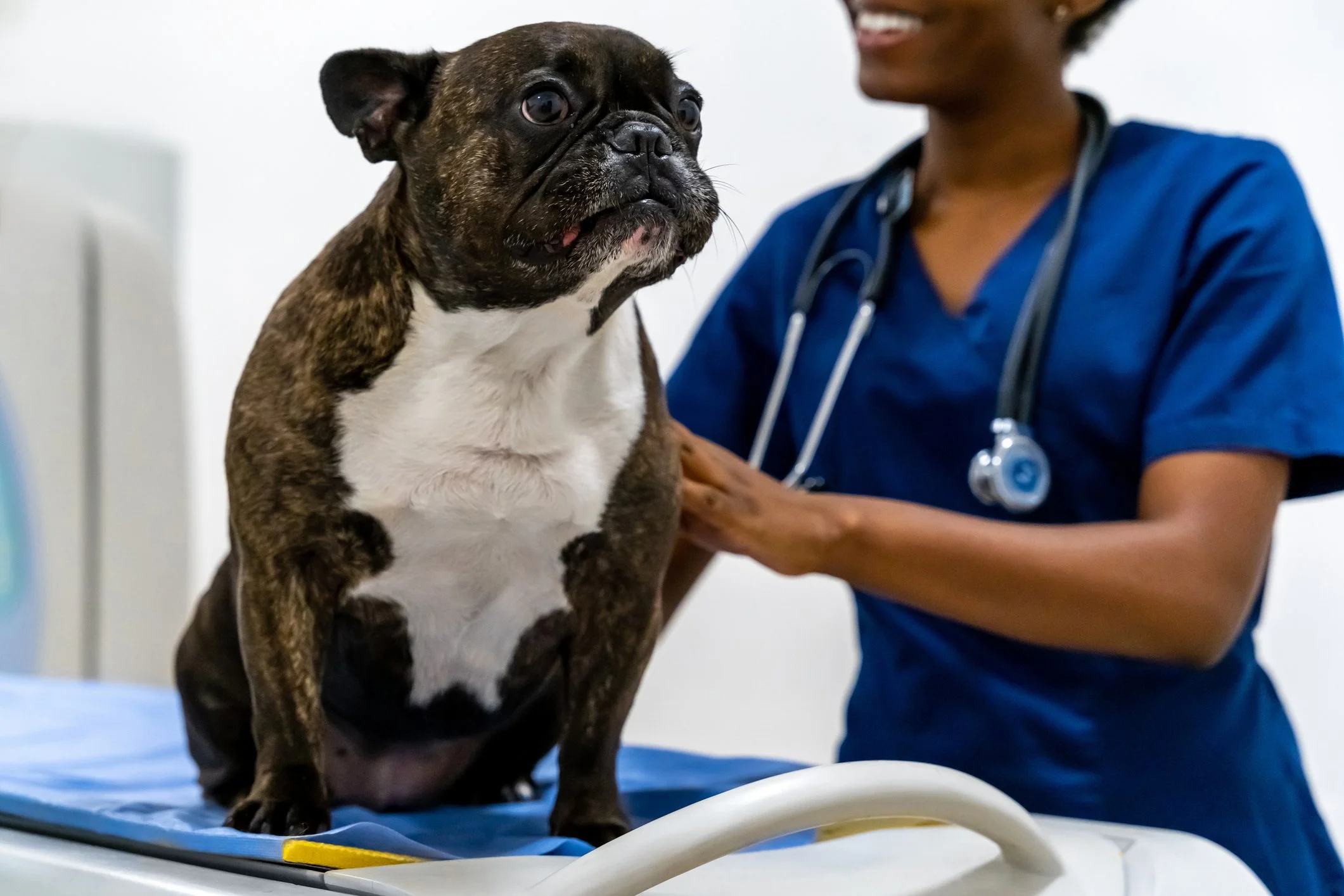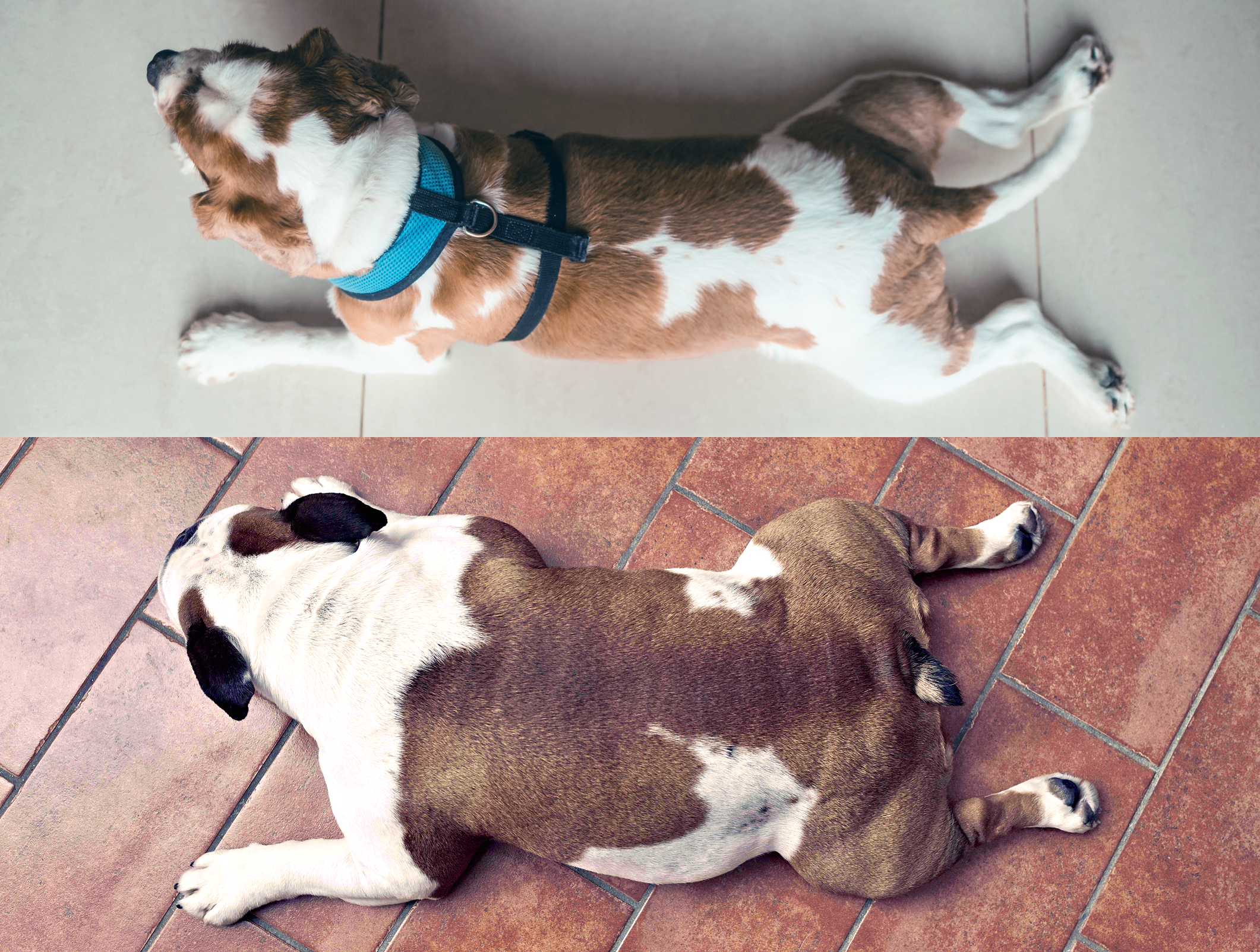Is Your Furry Friend Carrying a Little Extra Fluff? Let's Find Out!
As pet parents, we all love to spoil our pups with treats and extra cuddles. But sometimes, showing our love with snacks can lead to an excess of calories each day causing our furry companions to gain weight. And, just like in humans, obesity can lead to significant health problems, from joint pain and mobility issues to diabetes and heart disease.
So, how can you tell if your beloved puppers is tipping the scales a bit too much? Don't worry, you don't need a fancy scale! There are a few easy, hands-on ways to assess your dog's body condition right at home.
The Rib Check: Your Hands-On Guide
This is one of the best ways to get a quick read on your dog's weight.
Gently run your hands along your dog's sides. Start from their shoulders and move towards their hips.
What should you feel? You should be able to easily feel their ribs, almost like feeling the knuckles on the back of your hand when you make a fist. You shouldn't see the ribs, but you should definitely feel them with minimal pressure.
What if you don't feel them? If you have to press firmly to feel the ribs, or if you can't feel them at all, your dog might be carrying too much weight. If they're visible, they might be underweight.
The "Overhead" View & The "Side" Story
Next, take a look at your dog from a couple of different angles:
From Above: When you look down at your dog from overhead, you should see a clear "waist" – an hourglass shape where their body narrows in after their rib cage and before their hips. If your dog looks more like a sausage or a straight line from rib cage to tail, they're likely overweight.
From the Side: Stand to the side of your dog. Their abdomen (tummy) should tuck up slightly after their rib cage. If their belly sags or hangs down, that's another sign of excess weight.
Why Does It Matter? The Real Impact of Extra Pounds
Maintaining a healthy weight is one of the kindest things you can do for your dog. It helps them stay active, happy, and can significantly extend their lifespan. Overweight dogs often suffer from:
Joint problems like arthritis: Extra weight puts tremendous stress on your dog's joints, especially in areas like hips, knees, and spine. This constant strain can damage cartilage, leading to painful inflammation and the development or worsening of arthritis, making every movement a struggle.
Difficulty breathing: Excess fat in the chest and abdomen can restrict lung expansion, making it harder for your dog to breathe efficiently. This can lead to panting with minimal exertion, reduced oxygen intake, and can even exacerbate conditions like laryngeal paralysis or tracheal collapse.
Diabetes: Just like in humans, obesity is a significant risk factor for diabetes in dogs. Excess body fat can lead to insulin resistance, meaning the body's cells don't respond properly to insulin. Over time, this can exhaust the pancreas and lead to full-blown diabetes, requiring lifelong management.
Heart disease: Your dog's heart has to work much harder to pump blood through a larger body with extra fat. This increased workload can lead to higher blood pressure and eventually strain the heart muscle, increasing the risk of serious heart conditions and even heart failure.
Decreased stamina: Carrying extra weight makes every activity more difficult. An overweight dog will tire out much faster during walks or playtime, leading to less exercise, which in turn makes it harder to lose weight – a tough cycle to break!
Reduced quality of life: Beyond the specific medical conditions, being overweight simply means your dog can't enjoy life to the fullest. They might be less enthusiastic about walks, unable to play as vigorously, and generally feel less comfortable, impacting their overall happiness and interaction with your family.
Shortened lifespan: Studies have shown that dogs maintaining an ideal body weight can live significantly longer, often by several years, compared to their overweight counterparts. A healthy weight truly adds years to their life and life to their years!
What Next?
If you suspect your dog might be a bit overweight, the good news is that you've taken the first step by learning how to recognize the signs. Understanding their body condition is key to helping them live their healthiest, happiest life.
Stay tuned for Part Two of our series, where we'll dive into practical tips and strategies for helping your furry friend shed those extra pounds safely and effectively!
- Micah Youello, DVM







